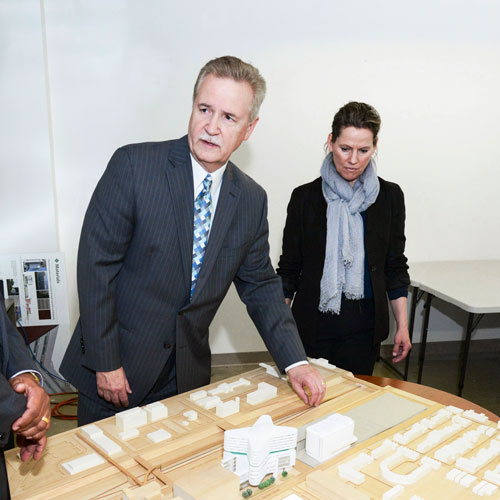Changing the way consumers access high-speed internet can be a massive undertaking—particularly in the largest city in the United States. Nevertheless, Charter Communications is at the center of a massive change that will bring high-speed web access to 145,000 underserved or entirely unserved customers by 2020.
Beyond the upgrade for its consumers, it’s also providing a shot in the arm for the state’s construction industry.
“Our multiyear build-out is a massive undertaking, one that will ultimately involve construction of thousands of miles of network infrastructure—all funded completely by Charter, with no taxpayer subsidies or customer contributions,” said Rich Ruggiero, the company’s vice president of external communications, in a January 2018 statement. The effort involves coordination with the New York State Department of Public Service, local municipalities, utility pole owners, and contractors, he adds, in order to connect the network to hundreds of thousands of utility poles across the state.
The effort also involves locating other network assets underground, including fiber-optic cable. When completed, the upgraded network will span thousands of miles across New York.
In January 2016, New York state regulators approved Charter Communications’ acquisition of Time Warner Cable, contingent upon Charter’s capability to upgrade broadband speeds and expand availability of high-speed internet for the state’s low-income consumers. The deal made Charter the largest cable company in New York and the second-largest in the United States. Its high-speed internet service is provided to consumers under the branding of Spectrum.
The massive undertaking got off to a slow start; Charter hit a small bump in 2017 when it fell behind the timeline laid out in the company’s initial agreement. As a result, Charter paid the state of New York $13 million, with the condition that it could get $12 million back if it completed its build-out on a revised schedule.
Since then, all systems are go, and as of January 2018 the company found itself outpacing its goals. In a report to the state’s Public Service Commission, Charter confirmed that it had added service to 42,889 buildings at the close of 2017, exceeding the initial goal of 36,771.
What makes the upgrade noteworthy is not only the fact that consumers in rural areas outside of New York City have the same high-speed access to internet service that many businesses in the city enjoy, but it’s that Charter is also providing it at an affordable rate. For qualifying families and senior citizens, the company’s Spectrum Internet Assist program provides a low-cost broadband option of speeds of 30 megabits per second for $14.99 per month.
According to a January 2018 report in the Albany Times Union, the Spectrum plan that features speeds of 100 megabits per second costs $64.99 per month, with new customers eligible for a promotional rate of $44.99 per month. The article notes that Charter has not tried to push preexisting Time Warner customers out of previous monthly deals they enjoyed—not only because the customers might have set the monthly rates themselves through haggling but also because those rates will eventually expire.
In the article, Charter CEO Tom Rutledge says the expectation is that customers will see the new Spectrum packages are a better deal and will make the switch on their own. Still, he emphasized the importance of letting people do so at their own pace rather than forcing a change upon them.
In January 2018, Charter also began providing service in New York City and the lower Hudson Valley at speeds of 1 gigabit per second—up to 40 times faster than standard service in the region, and a speed typically reserved for businesses and schools. Although those speeds aren’t necessary for many consumers—Netflix, for example, notes that viewers can stream ultra-high-definition video at speeds of just 25 megabits per second—the increased speeds can be of use to those who need to download large files or enjoy playing online video games.
To expand the service Charter will still have to convert its infrastructure to an all-digital signal, which is still being done on a community-by-community basis. Nevertheless, Charter representatives have pointed out that 100-megabit-per-second speeds were available to customers 20 months ahead of schedule, and they anticipate that the continued work on upgrades will allow the company to maintain its robust pace. At the time of writing, early press reports indicated the digital conversion could be completed by March 2018.
New York should also serve as a template Charter can use for its other territories around the country. Although no formal plans had been announced at the time of writing, several media outlets reported gigabit connections could be launched in additional Charter markets throughout the United States before the end of the year.
Ruggiero calls the initiative important for all consumers—no matter their background.
“Our New York build-out demonstrates Charter’s commitment to help close the digital divide the right way—bring superior products to unserved and underserved communities at highly competitive prices, combined with outstanding service,” he said in the statement. “The families and businesses in our urban, suburban, and the most rural communities deserve no less.”


